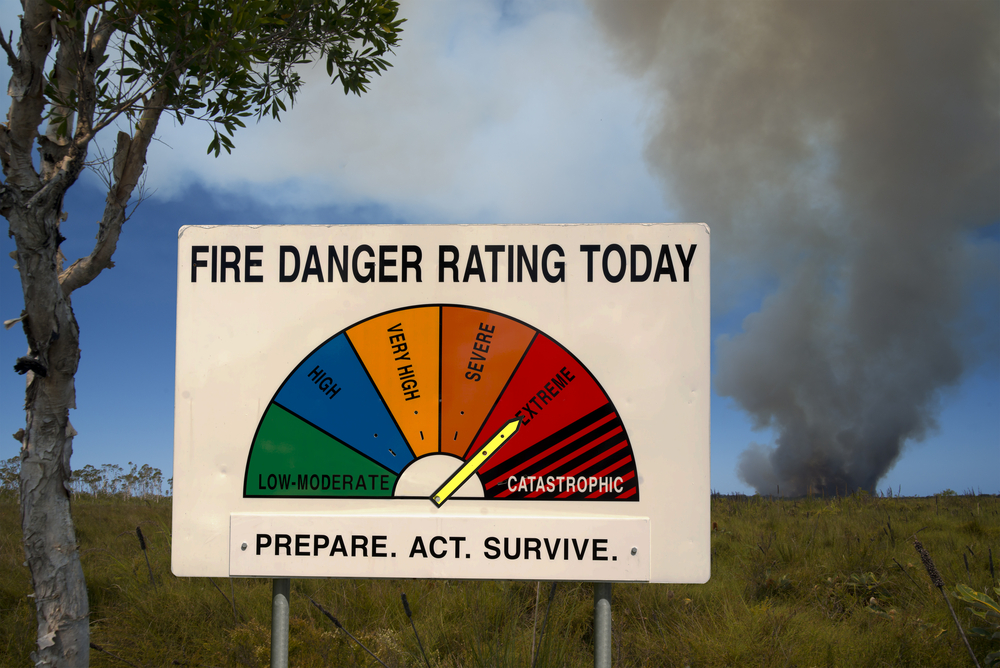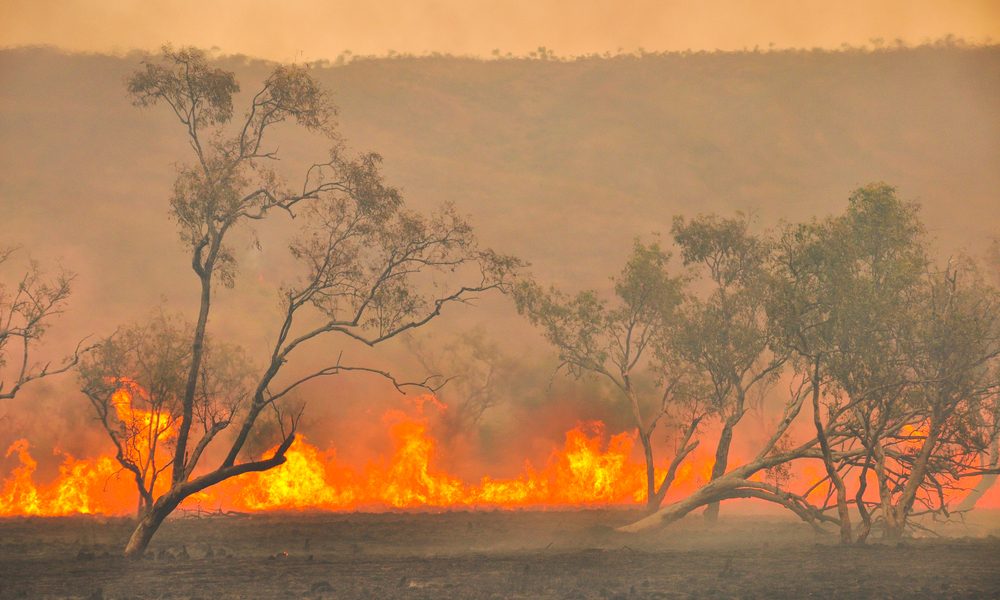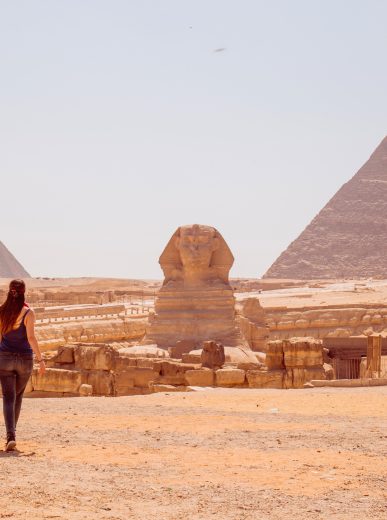The devastation caused by the Australian bushfires is a stark reminder of the power of nature and the impact of climate change on the planet. Even as Australians deal with the heart-wrenching impact on their communities, international travelers planning to visit the country in the coming weeks and months are wondering what to do about their travel plans.
 Is it safe to travel to Australia?
Is it safe to travel to Australia?
It depends. Some parts of the country have been evacuated and are not recommended to visit right now. However, it is worth remembering that Australia is a large continent with a land mass of nearly 8 million square kilometers (Europe is about 10 million sq. km.). Therefore, even though some areas ravaged by the bushfires are out of bounds for international visitors, there are still large parts of Australia that remain unaffected.
The Australian National Tourism Organization is encouraging travelers visiting Australia to stay up-to-date about their trip and keep an eye on changing conditions. If you have already booked a trip to Australia, you should check with your travel agent or hotels. They will have the latest information from tourism operators and visitor information centers in Australia about the local conditions.
Australian bushfires impact on travelers
The good news is that key tourist destinations in Australia remain safe and are welcoming visitors. All international airports are operating normally. This makes it possible for international visitors to travel to the land Down Under and enjoy incredible, uniquely Australian experiences. In fact, by choosing to travel to Australia or by rescheduling your trip instead of cancelling, you will extend much-needed support to Australian tourism providers and the affected communities.
Tourist destinations in Australia affected by the bushfires
New South Wales: The South Coast is particularly badly affected by the bushfires. This has been designated a Tourist Leave Zone due to the dangerous conditions. The Blue Mountains are also impacted. However, the North Coast, Hunter Valley, and Sydney are not affected, though there have been reports of bushfire smoke in the city.
Queensland: The tropical and beach paradise of Queensland remains largely unaffected by the bushfires. This means travelers can safely visit iconic Australian destinations such as the Great Barrier Reef, the Gold Coast, and the Whitsundays. In this stunning part of Australia, you will be spoiled for choice with golden beaches, fascinating rainforests, fun theme parks, and amazing museums.
Australian Capital Territory: The capital city of Canberra has been affected due to smoke haze from the bushfires.
Victoria: The state of Victoria remains largely unimpacted by the Australian bushfires. Travelers can visit the trendy city of Melbourne and participate in winery tours, go kayaking on the Yarra River, indulge in exquisite dining and shopping, and enjoy abundant art and culture. Also safe are the iconic Great Ocean Road, one of the world’s most scenic drives, and Philip Island with unique wildlife, pristine white beaches, adrenaline pumping water sports, and endless fun for the whole family.
Tasmania: Hobart and Launceston and the surrounding areas are not affected by the bushfires. “Tassie” offers visitors a chance to indulge in local seasonal cuisine and taste wine with a uniquely Tasmanian character. Here, you can catch the Southern Lights (aurora australis), visit untouched rainforests, paddle on a serene lake, see the Milky Way in all its glory, or go fagus turning, a distinctly Tasmanian experience.
South Australia: The city of Adelaide and surrounding areas are not affected. However, Kangaroo Island has been impacted.
Western Australia: The Coral Coast, Margaret River in the South West, Broome in the North West, and the city of Perth are not impacted. The only area battling bushfires in Western Australia is the Golden Outback.
Northern Territory: Alice Springs, Darwin, and Uluru (Ayers Rock) are unaffected. Closer in distance and character to Asia, tropical Darwin has everything from crocodile encounters to sunset cruises and street-side restaurants to galleries showcasing indigenous art. Uluru needs no introduction. A World Heritage site and one of Australia’s most iconic symbols, the majestic Ayers Rock in the heart of the country is a must-visit for any traveler. Alice Springs, located at the heart of Australia, is a great base to explore the natural wonders in the region. All these places are welcoming visitors and have been deemed safe for now.
For the latest information about the impact of the bushfires on popular destinations in Australia, check this page.
Travel insurance: Trip cancellation due to Australia bushfires
Travel insurance does not always cover natural disasters. You will need to read the fine print in your policy to see if this clause is included. Some policies only provide cover if the disaster occurred after the policy was taken out. A State of Emergency has been declared in New South Wales and a State of Disaster in Victoria. If you decide not to travel to Australia at this time, talk to your insurer about what is covered by your policy.
 Be prepared and stay informed
Be prepared and stay informed
It may be a good idea to consult your doctor before you leave, especially if you suffer from asthma or other respiratory conditions. Some cities in Australia have experienced smoky conditions due to the bushfires which could flare-up an underlying problem. Make sure you have all your medicines with you. You may also consider bringing a breathing mask called P2 or N95 as a precaution. This is a relatively inexpensive way to stay safe if you are caught in poor air conditions. And, don’t forget to make sure your vaccinations are up-to-date.
To enjoy your holiday in Australia and be safe, the most important thing is to stay informed. Always ensure you have the latest information. Make sure you have good connectivity and a generous data pack on your mobile phone. You can pick up a local SIM card at the airport on arrival. The emergency number in Australia is 000 and can be accessed from any mobile or fixed line phone.
Australia bushfires travel
Be sensible and stay safe if you’re travelling to Australia while the bushfires are raging. Follow the directions of the authorities and leave any area that is designated high-risk. Do not make the mistake of thinking you can survive a bushfire – it takes special training.
Provided you are careful and sensible, a wonderful and unique vacation awaits you in Australia. The tourism organization’s slogan says it well – There’s Nothing Like Australia! Go ahead and plan your trip today to the world’s largest island and smallest continent. You won’t regret it.






There are no comments.